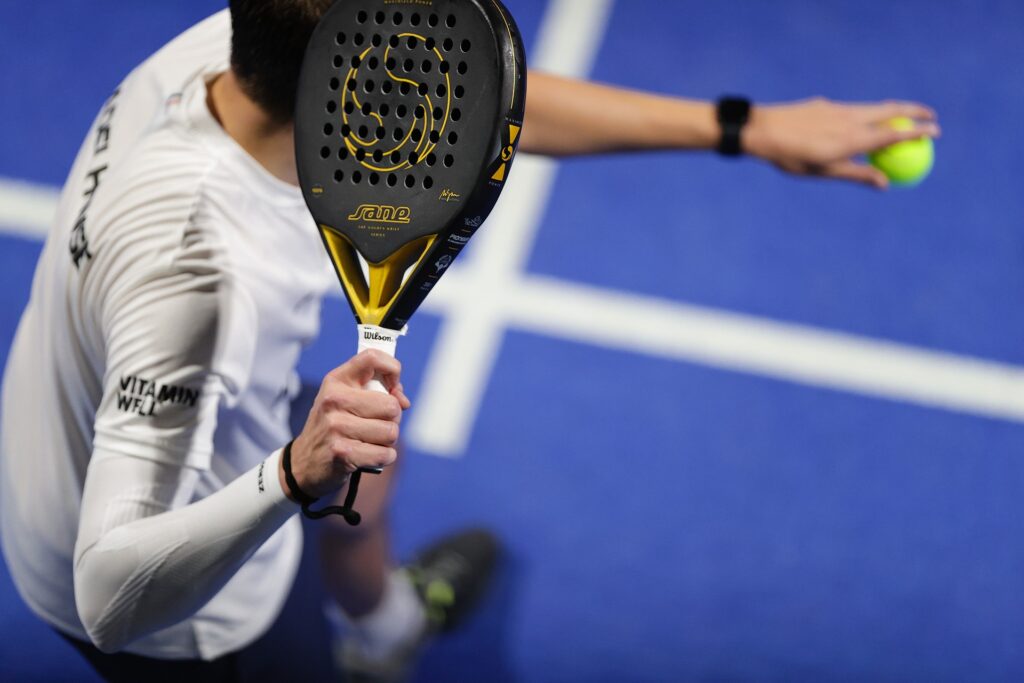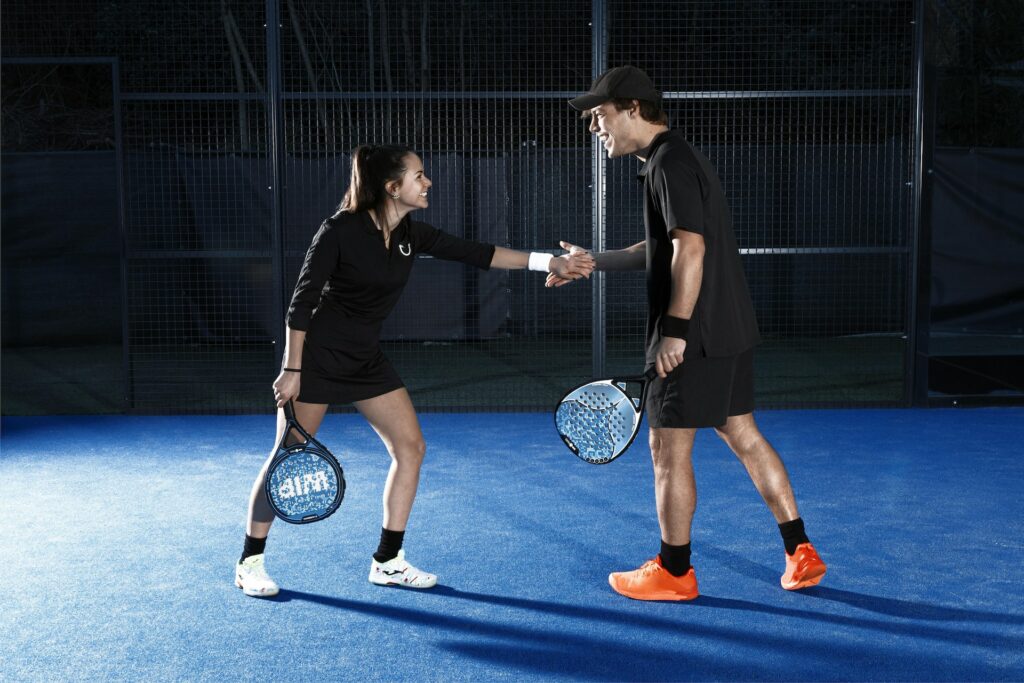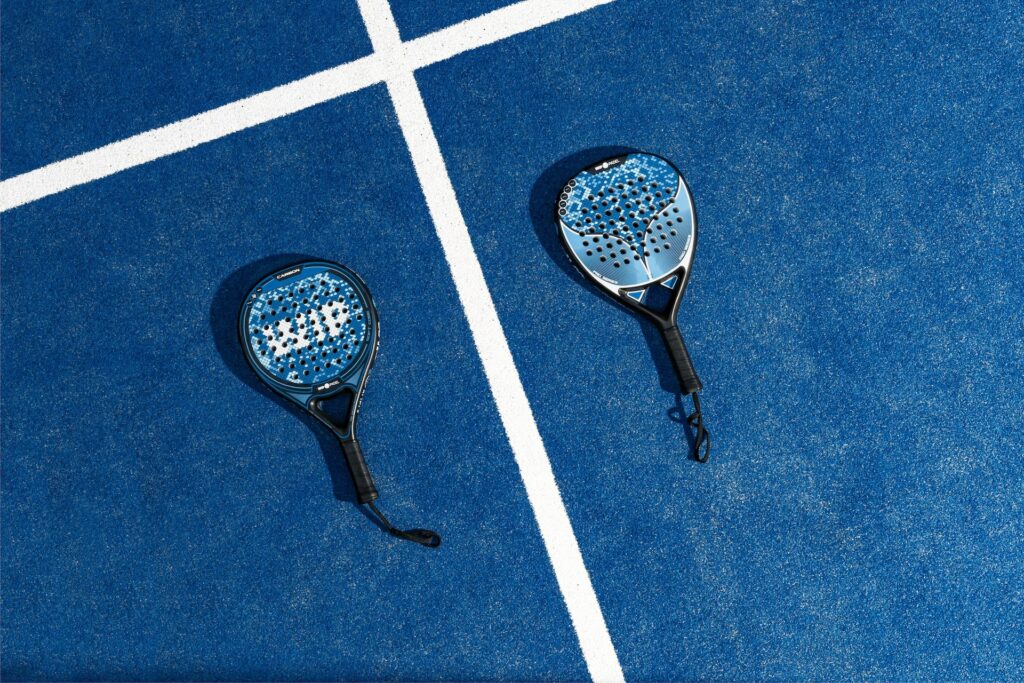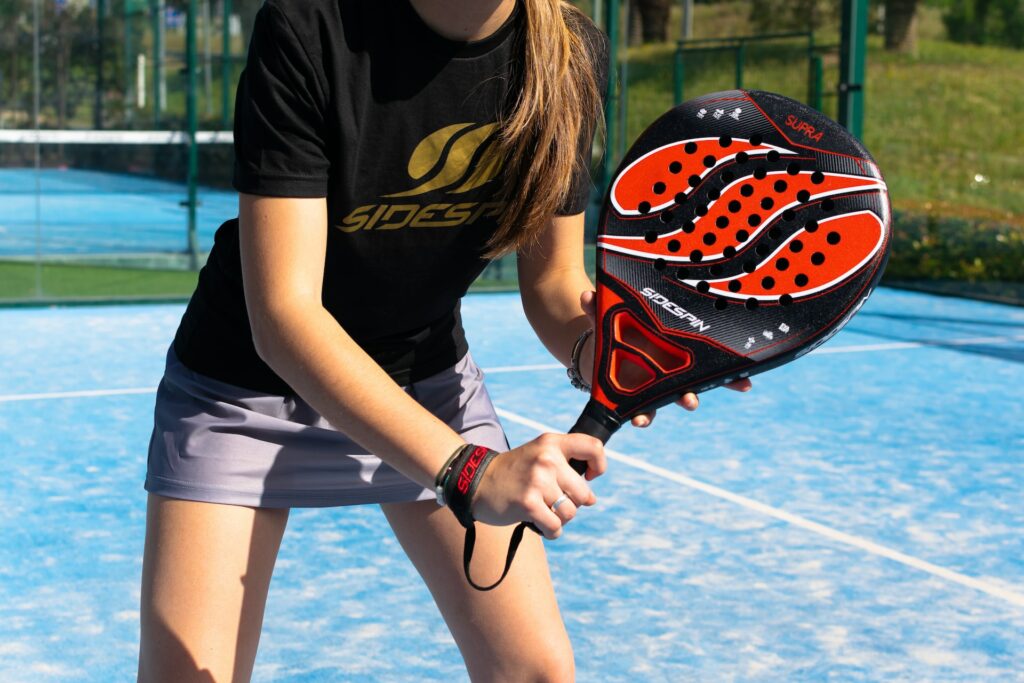WHAT IS PADEL?

Basic description of the game
Padel is a popular sport played in pairs in any team. Like tennis, padel is scored on a points system (15:0, 30:0, etc.) and the team that wins two sets wins.
Players use padel rackets and balls similar in size and shape to those used in tennis. One of the features of padel is that the ball can only hit the ground once before the player returns it, but the ball can bounce off one of the walls before it is played. Players can also choose to play volleyball. The ball is served from behind the serving line and the serving side releases the ball with his hand before playing it from below into the opponent’s serving area, which is marked by lines.
Padel is known for its long, exciting exchange, which is why many people play the sport. The game is easy to learn and even beginners can improve in 10-15 minutes.
Who can play Padel?
Padel is a versatile sport that is suitable for players of all ages and genders. Whether you are a man, woman or child, padel provides a fun and inclusive environment for all, making it the ideal family sport.
Compared to tennis, padel is much easier to learn and play, so it is accessible even to beginners who can start having fun after only five minutes of playing. The game also offers longer exchanges than tennis, which presents a new and exciting challenge for those who want to try something different.
Padel is also an excellent sport for seniors because of the smaller court size and doubles format, less running is required. But it’s not just a sport for casual players; padel has a thriving professional scene with tournaments played around the world, and in 1991 the International Padel Federation was founded in Madrid to oversee the sport. Whether you are a casual player or an ambitious professional, padel has something for everyone.


Other benefits of padel?
Padel is a fantastic sport to help you develop your fitness, but it is accessible to players of all fitness levels. Thanks to its broad appeal, padel attracts a wide range of players from all walks of life.
One of the great things about padel is that it is an intergenerational game. It’s not uncommon for grandparents to play with their grandchildren and to play competitively, making it an ideal family activity. Plus, padel is an exciting game and spectators often have a great time cheering on their favourite players.
An exchange in padel lasts longer than in tennis or squash, with players hitting the ball 3-4 times more than in tennis. This makes the game more exciting and challenging.
Padel is a family game, making it an ideal activity for women, men and children to play together. The smaller court size brings players closer together, making social interaction easier during the game. You can chat and interact with your teammates, which enhances the enjoyment of the game.
Game rules

Points
Padel uses the same scoring system as tennis, with games counted in a similar way (e.g. 15/0, 30/0, 40/0, advantage, match, etc.) A team must win six games to win a set, and the team that wins two sets wins the match. In the event of a 6/6 tie, a tie-breaker is played, similar to tennis.

Serve
The rules of the serve in padel:
- At the beginning of the paddle game, the server serves the ball diagonally, similar to tennis. The serve has two attempts to serve the ball.
- The server stands behind the serving line, while the receiver stands diagonally opposite the server.
- The server must first bounce the ball off the surface and then hit it from below to serve.
- For the ball to be in play, the ball must land in the serving area on the receiver’s side of the court.
- If the ball lands outside the serving area, it is considered an out.
- If the ball reaches the serving area but touches the sidewall before or after it enters the serving area, it is out of play.
- If the ball touches the net before it lands in the serving area, the server must attempt to serve again.

Game
Padel has unique rules that make the game exciting and fun. Here are some of the rules:
- When the ball is in play, it must cross the net and always bounce off the surface on the opponent’s side before the ball touches the wall.
- Players can bounce the ball, which means they can bounce it before it touches the surface.
- If the ball has already touched the surface, players can bounce the ball off the wall and play it back to the opponent’s side.
- As in tennis, the ball can only bounce off the surface once on one side and can only be played to the opponent’s side with one shot.
- To bounce the ball to the other side, players must hit the ball hard.
- The opposing team must run to play the ball back to their side.
- These rules ensure long and exciting battles between teams, making padel an exciting sport.